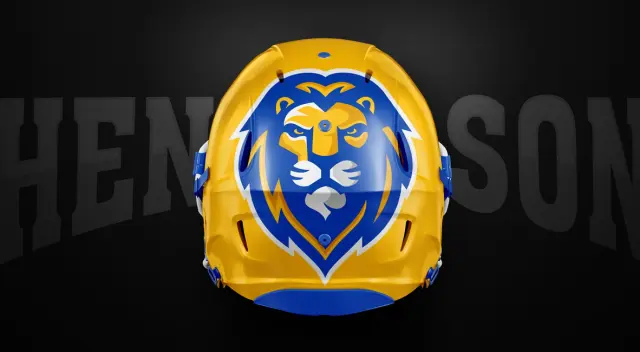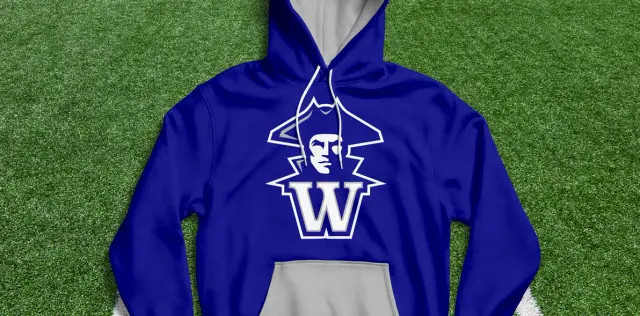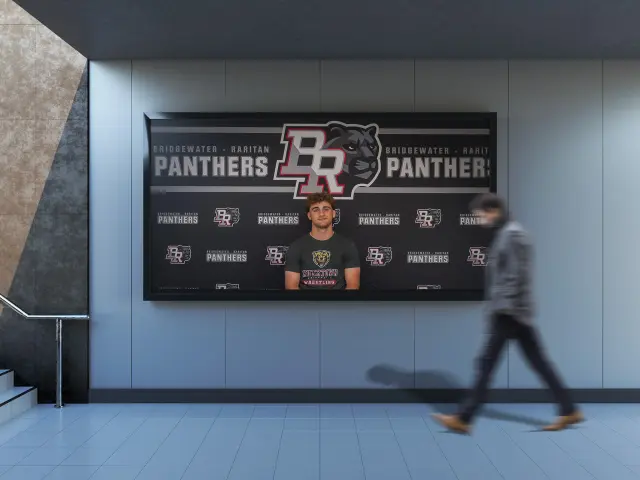School Branding Blog
School Logo Design Psychology: Build Trust + Pride (2025)

A school logo is more than just a visual identifier—it’s a psychological tool that shapes emotions, builds trust, and creates lasting impressions. The most effective school logos tap into deep psychological principles to create symbols that resonate with families, inspire students, and build community pride.
In plain terms: your logo should feel like your school on its best day—confident, welcoming, and clear from far away and up close. The goal isn’t “fancy,” it’s “memorable and useful everywhere.”
Understanding the psychology behind logo design is crucial for schools seeking to create visual identities that not only look professional but also connect emotionally with their community. This psychological approach becomes even more powerful when integrated with the psychology of school branding and the complete school mascot design process, creating a comprehensive approach to visual identity that drives enrollment and community engagement.
Related: mascot logo design • visual identity design • school logo psychology
Understanding Logo Design Psychology
Before we get technical, remember the everyday test: can parents recognize your logo in 1 second, and can students draw it from memory? If not, it likely needs simplification.
The Psychological Power of School Logos
First Impressions: Logos create immediate emotional and cognitive responses Trust Building: Professional, well-designed logos signal quality and reliability Community Identity: Logos become symbols of shared values and belonging Memory and Recognition: Effective logos are memorable and easily recognizable Emotional Connection: Logos can evoke pride, nostalgia, and positive associations
How Logos Influence Perception
A strong logo helps people process information quickly and feel something positive about your school before they read a single word.
Cognitive Processing:
- Visual Hierarchy: How elements are arranged affects what people notice first
- Pattern Recognition: Familiar shapes and symbols create instant understanding
- Color Psychology: Different colors trigger specific emotional responses
- Typography Psychology: Font choices communicate personality and values
Emotional Impact:
- Trust Signals: Professional design builds credibility and confidence
- Pride Generation: Well-designed logos create positive associations and pride
- Community Connection: Shared symbols create sense of belonging and identity
- Aspiration: Logos can inspire and motivate students and families
The Logo Design Challenge for Schools
Common Problems:
- Generic Design: Logos that could represent any school
- Poor Scalability: Designs that don’t work at different sizes
- Weak Symbolism: Logos that don’t reflect school values or culture
- Outdated Aesthetics: Designs that look dated or unprofessional
- Inconsistent Application: Logos used differently across different materials
Plainly: if your logo breaks on a small favicon, looks muddy on a T‑shirt, or needs a paragraph to explain it, it’s not ready yet.
Psychological Principles of Effective Logo Design
Simplicity and Clarity
Why Simplicity Works:
- Cognitive Ease: Simple designs are easier to process and remember
- Versatility: Simple logos work across different applications and sizes
- Timelessness: Simple designs are less likely to become outdated
- Recognition: Simple logos are more easily recognized and recalled
Simplicity Guidelines:
- Limit Elements: Use 2-3 main visual elements maximum
- Clean Lines: Avoid unnecessary details or decorative elements
- Clear Hierarchy: Make the most important element prominent
- White Space: Use negative space effectively for balance and clarity
Rule of thumb: if it can’t be drawn in 10 seconds by a student, it’s probably too complex.
Examples of Simple School Logos:
- Geometric Shapes: Clean, modern, professional appearance
- Minimalist Typography: Focus on school name with subtle graphic elements
- Iconic Symbols: Single, powerful symbol that represents school values
- Monogram Designs: Stylized letters that create memorable mark
You don’t need all of these at once. One strong idea, well executed, beats a busy collage every time.
Logo Design Psychology in Action
Symbolism and Meaning
Symbolic Elements in School Logos:
When choosing symbols, aim for meaning over decoration. Avoid clip‑art and crowded shields—pick one clear idea that truly represents your school.
Academic Symbols:
- Books: Knowledge, learning, education
- Graduation Caps: Achievement, completion, success
- Quills/Pens: Writing, communication, creativity
- Globes: Global perspective, world knowledge, international focus
Nature Symbols:
- Trees: Growth, strength, roots, community
- Mountains: Aspiration, achievement, stability
- Rivers: Flow, journey, life, community
- Suns: Energy, optimism, new beginnings, enlightenment
Community Symbols:
- Shields: Protection, strength, tradition, honor
- Bridges: Connection, transition, unity, progress
- Hands: Community, support, partnership, care
- Stars: Excellence, aspiration, achievement, guidance
Cultural Symbols:
- Local Landmarks: Community connection, geographic identity
- Historical Elements: Tradition, heritage, continuity
- Cultural Icons: Diversity, inclusion, community values
- Regional Symbols: Local pride, community identity, belonging
Color Psychology in Logo Design
Color Associations for Schools:
Keep contrast and accessibility in mind. Your logo must hold up in one color (black/white) and pass basic contrast checks when used on dark/light backgrounds.
Blue:
- Psychological Impact: Trust, stability, intelligence, professionalism
- Best Use: Academic focus, reliability, traditional values
- School Applications: Academic programs, professional development, trust building
Red:
- Psychological Impact: Energy, passion, determination, excitement
- Best Use: Athletics, competitive spirit, high energy programs
- School Applications: Sports teams, competitive programs, school spirit
Green:
- Psychological Impact: Growth, harmony, success, balance
- Best Use: Environmental programs, growth mindset, community harmony
- School Applications: STEM programs, environmental focus, community building
Gold/Yellow:
- Psychological Impact: Optimism, achievement, excellence, warmth
- Best Use: Achievement, excellence, positive energy
- School Applications: Academic excellence, achievement recognition, positive culture
Purple:
- Psychological Impact: Creativity, wisdom, innovation, sophistication
- Best Use: Creative programs, innovation, advanced learning
- School Applications: Arts programs, advanced placement, creative learning
Color Combination Strategies:
- Complementary Colors: Create visual interest and balance
- Analogous Colors: Create harmony and cohesion
- Monochromatic: Sophisticated, professional appearance
- Triadic Colors: Vibrant, energetic, well-balanced
Typography Psychology in Logo Design
Font Categories and Psychological Impact:
Serif Fonts (Times New Roman, Georgia, Garamond):
- Psychological Impact: Tradition, authority, academic credibility, trust
- Best Use: Traditional schools, academic focus, established institutions
- Characteristics: Formal, professional, timeless, authoritative
Sans-Serif Fonts (Helvetica, Arial, Open Sans):
- Psychological Impact: Modern, clean, approachable, accessible
- Best Use: Contemporary schools, progressive institutions, community focus
- Characteristics: Clean, modern, friendly, professional
Script Fonts (Brush Script, Pacifico, Dancing Script):
- Psychological Impact: Creativity, personality, warmth, elegance
- Best Use: Creative programs, arts schools, personalized education
- Characteristics: Artistic, expressive, personal, elegant
Display Fonts (Impact, Bebas Neue, League Gothic):
- Psychological Impact: Boldness, energy, attention-grabbing, strength
- Best Use: Athletics, events, school spirit, competitive programs
- Characteristics: Bold, energetic, memorable, powerful
Typography Best Practices:
- Legibility: Ensure text is readable at all sizes
- Hierarchy: Use different weights and sizes to create visual hierarchy
- Consistency: Maintain consistent typography across all applications
- Personality: Choose fonts that reflect school values and culture
Practical tip: pick one type family for the logo and one for body copy across materials. If you need a custom touch, adjust letter spacing or refine a single letter—avoid adding more fonts.
Logo Design Strategies by School Type
Elementary School Logo Design
Psychological Priorities:
- Safety and Security: Create feeling of safety and protection
- Warmth and Approachability: Friendly, welcoming appearance
- Growth and Learning: Symbols of development and discovery
- Community Connection: Sense of belonging and family
In plain language: friendly shapes, warm colors, and clear, readable letters that feel safe and joyful.
Design Strategies:
- Warm Colors: Use colors that feel safe and welcoming
- Rounded Shapes: Soft, friendly shapes that feel approachable
- Nature Elements: Trees, flowers, animals that represent growth
- Simple Typography: Clean, readable fonts that feel friendly
Symbolic Elements:
- Growing Trees: Represent student growth and development
- Open Books: Symbolize learning and discovery
- Hands: Community, care, and support
- Suns: New beginnings, optimism, energy
Middle School Logo Design
Psychological Priorities:
- Identity Development: Support for personal growth and self-discovery
- Energy and Engagement: Dynamic, exciting appearance
- Balance: Between childhood and adulthood
- Community Belonging: Sense of connection and acceptance
For middle schools: show movement and progress without getting too edgy or childish.
Design Strategies:
- Dynamic Elements: Movement, energy, and forward momentum
- Balanced Colors: Mix of mature and youthful colors
- Geometric Shapes: Modern, structured, but not overly formal
- Contemporary Typography: Modern fonts that feel relevant
Symbolic Elements:
- Bridges: Transition, connection, journey
- Mountains: Aspiration, achievement, growth
- Stars: Individual achievement, guidance, aspiration
- Waves: Flow, change, energy, movement
High School Logo Design
Psychological Priorities:
- Achievement and Excellence: Symbols of success and accomplishment
- Preparation: Readiness for college and career
- Tradition and Pride: Connection to school history and values
- Individual Excellence: Recognition of personal achievement
For high schools: confident, legible marks that look credible on transcripts, uniforms, and signage.
Design Strategies:
- Professional Appearance: Sophisticated, credible design
- Strong Typography: Bold, confident font choices
- Classic Elements: Timeless symbols and design elements
- Achievement Symbols: Elements that represent success and excellence
Symbolic Elements:
- Shields: Protection, strength, honor, tradition
- Crowns: Excellence, achievement, leadership
- Torches: Knowledge, enlightenment, guidance
- Eagles: Freedom, strength, vision, achievement
Charter School Logo Design
Psychological Priorities:
- Innovation: Forward-thinking, progressive appearance
- Choice: Empowerment and parental involvement
- Results: Focus on outcomes and achievement
- Community Impact: Positive change and improvement
For charters: modern, distinctive symbols that show progress and outcomes.
Design Strategies:
- Modern Aesthetics: Contemporary, innovative design approach
- Bold Colors: Confident, energetic color choices
- Unique Elements: Distinctive symbols that set them apart
- Results-Oriented: Symbols that represent achievement and success
Symbolic Elements:
- Lightbulbs: Innovation, ideas, creativity, solutions
- Arrows: Progress, forward movement, achievement
- Puzzles: Problem-solving, innovation, collaboration
- Rockets: Launch, achievement, reaching new heights
Logo Design Process and Implementation
Research and Discovery Phase
School Identity Research:
- Mission and Values: Understand core school values and mission
- Community Culture: Research local community and cultural elements
- Student Demographics: Understand student population and needs
- Parent Expectations: Research parent values and priorities
Competitive Analysis:
- Local Schools: Analyze logos of nearby schools and competitors
- Similar School Types: Research logos of similar institutions
- Industry Trends: Understand current design trends in education
- Best Practices: Study successful school logos and design approaches
Stakeholder Input:
- Administration: Gather input from school leadership
- Teachers and Staff: Understand staff perspectives and values
- Students: Get student input on what represents their school
- Parents: Understand parent values and expectations
- Community: Consider community values and local culture
Concept Development Phase
Brainstorming and Ideation:
- Symbol Exploration: Generate ideas for symbolic elements
- Typography Research: Explore font options and combinations
- Color Palette Development: Create color schemes that reflect school values
- Style Direction: Define overall aesthetic and design approach
Concept Refinement:
- Sketch Development: Create multiple logo concepts and variations
- Symbol Integration: Combine symbolic elements with typography
- Color Application: Apply color psychology principles to concepts
- Scalability Testing: Ensure designs work at different sizes
Concept Presentation:
- Multiple Options: Present 3-5 distinct logo concepts
- Context Applications: Show logos in various applications and contexts
- Rationale Explanation: Explain psychological and strategic reasoning
- Stakeholder Feedback: Gather feedback and input from all stakeholders
Keep rounds focused. Three strong, different directions are better than ten lookalikes.
Design Refinement Phase
Feedback Integration:
- Stakeholder Input: Incorporate feedback from all stakeholder groups
- Design Refinement: Refine chosen concept based on feedback
- Detail Enhancement: Perfect typography, spacing, and proportions
- Color Optimization: Fine-tune colors for maximum psychological impact
Technical Optimization:
- Vector Creation: Create scalable vector versions of logo
- File Format Preparation: Prepare files for various applications
- Color System: Develop color specifications and variations
- Usage Guidelines: Create guidelines for proper logo usage
Quick vendor test: embroider a 1‑inch version and print a 0.5‑inch version. If it reads cleanly in both, your forms are right.
Deliverables to insist on: vector source (AI/SVG), transparent PNGs (dark/light/one‑color), and a one‑color lockup for small or single‑ink uses.
Implementation and Launch Phase
Brand Guidelines Development:
- Logo Usage: Clear guidelines for proper logo application
- Color Specifications: Exact color codes and usage rules
- Typography Standards: Font specifications and usage guidelines
- Spacing and Sizing: Minimum sizes and spacing requirements
Application Testing:
- Print Applications: Test logo on various print materials
- Digital Applications: Test logo on websites and digital platforms
- Merchandise: Test logo on school merchandise and apparel
- Signage: Test logo on building signs and wayfinding
Launch Strategy:
- Internal Launch: Introduce logo to staff, students, and families
- External Launch: Announce new logo to community and media
- Implementation Timeline: Gradual rollout across all applications
- Feedback Collection: Gather feedback and make adjustments as needed
Assign a clear owner (often communications) and a simple approval path. Consistency happens when responsibility is visible.
Measuring Logo Effectiveness
Psychological Impact Metrics
Recognition and Recall:
- Unaided Recall: Can people remember and describe the logo?
- Aided Recognition: Can people identify the logo when shown?
- Association Testing: What do people associate with the logo?
- Emotional Response: How do people feel when they see the logo?
Trust and Credibility:
- Professional Perception: Does the logo make the school look professional?
- Quality Association: Do people associate quality with the logo?
- Trust Building: Does the logo build trust and confidence?
- Credibility Enhancement: Does the logo enhance school credibility?
Quick tests: the 5‑second test (do people recall it?), the distance test (can you read it from across a gym?), and the tiny test (does the favicon still look like you?).
Community Engagement Metrics
Pride and Ownership:
- Community Pride: Do community members feel proud of the logo?
- Student Engagement: Do students identify with and use the logo?
- Parent Satisfaction: Are parents satisfied with the logo design?
- Staff Adoption: Do staff members use and promote the logo?
Usage and Application:
- Consistent Usage: Is the logo used consistently across applications?
- Merchandise Sales: Do people buy merchandise with the logo?
- Social Media Engagement: Is the logo shared and engaged with online?
- Community Adoption: Do community members use the logo independently?
Enrollment Impact Metrics
First Impressions:
- Initial Appeal: Do prospective families find the logo appealing?
- Professional Perception: Does the logo create positive first impressions?
- School Quality: Do people associate quality with the logo?
- Enrollment Influence: Does the logo influence enrollment decisions?
Brand Differentiation:
- Uniqueness: Does the logo help the school stand out?
- Memorability: Is the logo memorable and distinctive?
- Competitive Advantage: Does the logo provide competitive advantage?
- Market Position: Does the logo support desired market position?
Common Logo Design Mistakes and How to Avoid Them
Mistake 1: Overly Complex Design
Problem: Logos with too many elements, details, or information Impact: Poor scalability, reduced memorability, cluttered appearance Solution: Simplify design to essential elements, focus on core message
Tip: remove an element and see if the logo gets clearer. If yes, keep it simpler.
Mistake 2: Poor Scalability
Problem: Logos that don’t work at different sizes or applications Impact: Inconsistent appearance, poor readability, unprofessional look Solution: Test logo at various sizes, ensure readability at all scales
Run the favicon test early—don’t wait until the end.
Mistake 3: Generic or Cliché Design
Problem: Logos that look like every other school logo Impact: Poor differentiation, weak brand identity, missed opportunities Solution: Research competitors, find unique elements, create distinctive design
Ask “what’s only true of our school?” Start there.
Mistake 4: Ignoring Target Audience
Problem: Logos designed without considering family and student preferences Impact: Poor resonance, weak emotional connection, missed engagement Solution: Research target audience, gather stakeholder input, test concepts
Speak with 5 parents and 5 students. Patterns will appear quickly.
Mistake 5: Inconsistent Application
Problem: Logo used differently across different materials and applications Impact: Weak brand identity, confused messaging, unprofessional appearance Solution: Create brand guidelines, train staff, monitor usage consistently
A one‑page “how to use the logo” sheet near every office printer solves 80% of issues.
The Future of School Logo Design
Emerging Trends
Digital-First Design: Logos optimized for digital applications and screens Responsive Logos: Logos that adapt to different contexts and applications Interactive Elements: Logos with animated or interactive components Sustainability Focus: Logos that reflect environmental values and responsibility
Technology Integration
Augmented Reality: Logos that come to life through AR technology Dynamic Logos: Logos that change based on context or data Personalization: Logos that adapt to individual preferences or needs AI-Assisted Design: AI tools that help create and optimize logo designs
Psychological Evolution
Inclusivity: Logos that reflect diverse communities and values Wellness Focus: Logos that emphasize mental health and well-being Global Perspective: Logos that reflect international connections and diversity Innovation: Logos that signal forward-thinking and adaptability
Conclusion: Logos as Psychological Tools
School logo design psychology reveals that logos are far more than visual identifiers—they are psychological tools that shape emotions, build trust, and create lasting impressions. The most effective school logos tap into deep psychological principles to create symbols that resonate with families, inspire students, and build community pride.
By understanding the psychological principles behind effective logo design and implementing a strategic design process, schools can:
- Build Trust and Credibility: Professional, well-designed logos signal quality and reliability
- Create Emotional Connections: Logos that resonate with families and build community pride
- Support Brand Identity: Visual symbols that reinforce school values and culture
- Drive Enrollment Success: Logos that create positive first impressions and influence decisions
The most successful schools recognize that logo design is a strategic decision that requires psychological insight, community understanding, and professional execution. When combined with comprehensive branding strategies and psychological approaches to color and typography, effective logo design becomes a powerful tool for building school identity and driving enrollment success.
Remember, your school’s logo is often the first and most lasting visual impression families have of your institution. Design it strategically, implement it consistently, and watch as your logo becomes a powerful ambassador for your school’s values and excellence.
Related: School Visual Identity Systems, School Brand Identity, Mascot & Logo Design Service.
Ready to develop a psychologically-informed logo design strategy for your school? Our comprehensive approach to complete school mascot design process includes strategic logo design that builds trust, pride, and community connection.
We Build and Manufacture Mascot Costumes
A professionally built mascot costume creates unforgettable moments at games, rallies, and community events.

See Full Details →
Design to Delivery
We manage everything
6-12 Week Delivery
In time for your season
Safety First
Ventilation & visibility
Starts at $2,500
Professional quality
About Mash Bonigala
Mash Bonigala is the Founder & CEO of School Branding Agency. Over the past 15 years, he's helped 250+ K-12 schools transform their brand identity and drive enrollment growth. From charter schools to public districts, Mash specializes in creating mascot systems and brand strategies that rally communities, boost school spirit, and convert prospects into enrolled families. Schedule a Zoom call to discuss your school →
Mascot logo design
Get an enrollment-ready mascot your community loves
Start with our mascot logo design service. We’ll craft a distinctive, on‑brand mascot system and rollout plan tailored for your school.
Start your estimateRelated
Charter Application Branding - Professional Identity for Authorizer Approval
Professional charter application branding that demonstrates operational readiness to authorizers. Complete brand identity, website, and application materials. Charter-specific packages from $8K.
View detailsRelated
Charter School Branding - Mascots & Identity (2025)
We help charter schools build mascots and identity systems that rally communities and support enrollment. See packages and proof.
View details



